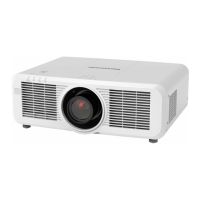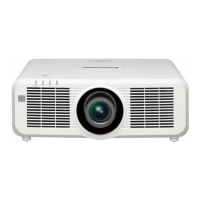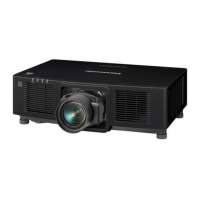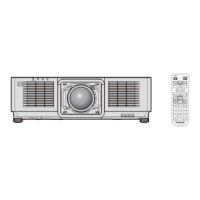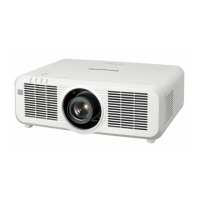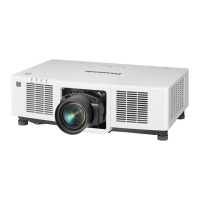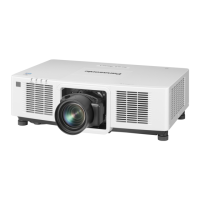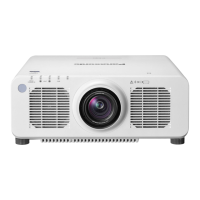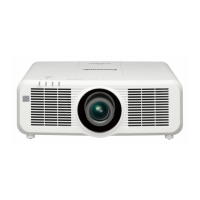Chapter 4 Settings — [ADVANCED MENU] menu
ENGLISH - 91
[BLACK BORDER WIDTH] (Right)
Projection range Edge blending [WIDTH] (Right)
[MARKER] (Red)
Edge blending [START] (Right)
([MARKER] (Green))
[BLACK BORDER LEVEL]
[OVERLAPPED BLACK LEVEL] (Right)
[NON-OVERLAPPED BLACK LEVEL]
Note
f
[BRIGHTNESS ADJUST] is a function that makes the increased brightness in black level of the overlapping image area difcult to notice
when [EDGE BLENDING] is used to structure a multi-display screen. The optimal point of correction is set by adjusting [NON-OVERLAPPED
BLACK LEVEL] so the black level of the overlapping image area will be the same level as the non-overlapping area. If the border area of the
part where the image is overlapping and the non-overlapping part gets brighter after adjusting [NON-OVERLAPPED BLACK LEVEL], adjust
the width of the top, bottom, left, or right. Adjust [BLACK BORDER LEVEL] when the width adjustment makes only the border area darker.
f
The joining part may look discontinuous depending on the position you are looking from when a screen with high gain or rear screen is used.
f
When structuring a multi-display screen using both horizontal and vertical edge blending, adjust [OVERLAPPED BLACK LEVEL] rst before
making adjustments in Step
12)
. Adjustment method is same as the procedure of [NON-OVERLAPPED BLACK LEVEL].
f
If only horizontal or vertical edge blending is used, set all items in [OVERLAPPED BLACK LEVEL] to 0.
f
The [AUTO TESTPATTERN] setting will change in conjunction with the setting in the [DISPLAY OPTION] menu
→
[COLOR ADJUSTMENT]
→
[AUTO TESTPATTERN].
[CLAMP POSITION]
You can adjust the optimal point when the black part of the image is blunt or it has turned green.
1) Press
as
to select [CLAMP POSITION].
2) Press
qw
to adjust.
Status Rough guide for optimal value Range of adjustment
The black part is blunt.
The point where bluntness of the black part improves the most is
the optimal value.
1 - 255
The black part is green.
The point where the green part becomes black, and the bluntness
has improved is the optimal value.
Note
f
[CLAMP POSITION] can be adjusted only when a signal is input to the <COMPUTER IN> terminal.
f
Adjustment may not be possible depending on the signal.
[RASTER POSITION]
This will allow the position of the image to move within the display area arbitrarily when the input image is not
using the whole display area.
1) Press
as
to select [RASTER POSITION].
2) Press the <ENTER> button.
f
The
[RASTER POSITION]
screen is displayed.
3) Press
asqw
to adjust the position.
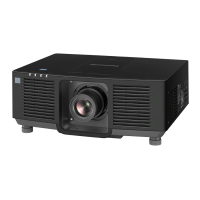
